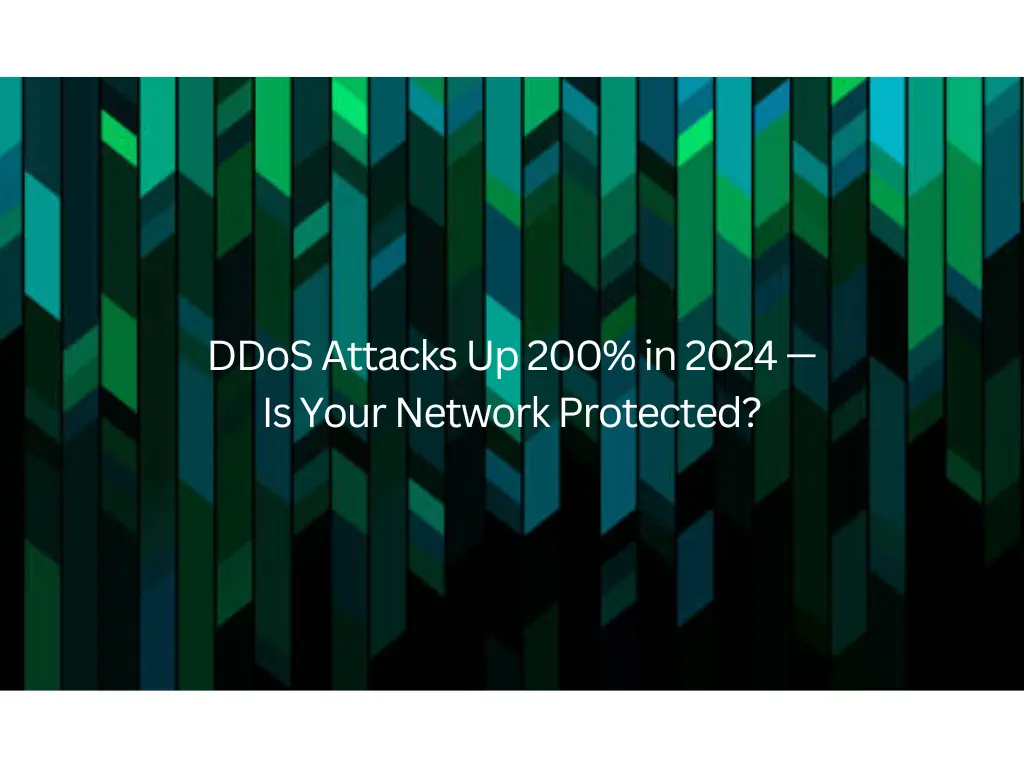The digital landscape in 2024 has been defined by a dramatic escalation in Distributed Denial of Service (DDoS) attacks. Cybercriminals are leveraging advanced tools, geopolitical unrest, and vulnerable IoT ecosystems to launch unprecedented assaults, crippling businesses and critical infrastructure globally. With attacks growing in frequency, scale, and sophistication, the question isn’t if your network will be targeted—it’s when. Here’s what you need to know to protect your organization.
The 2024 DDoS Surge: By the Numbers
- Hyper-Volumetric Attacks: Cyber Security Companies reported a 1,885% quarter-over-quarter (QoQ) increase in attacks exceeding 1 Tbps in Q4 2024, including a record-breaking 5.6 Tbps UDP attack—the largest ever recorded.
- Frequency: Over 21.3 million DDoS attacks were mitigated by Companies in 2024 alone—a 53% increase from 2023
- Ransom DDoS: Ransom-driven attacks surged 78% QoQ in Q4, with cybercriminals exploiting peak seasons like holidays to extort businesses.
- Application Layer Assaults: Microsoft observed a shift toward stealthy Layer 7 (HTTP) attacks, which target specific web applications to evade traditional defenses.
Why Are Attacks Exploding? Key Drivers
- Geopolitical Conflicts: Hacktivist groups like NoName and Cyber Army of Russia Reborn weaponize DDoS to disrupt elections, protests, and critical services. For example, Israel saw a 2,844% surge in attacks during political conflicts.
- DDoS-for-Hire Services: Booter/stresser platforms now use AI to bypass CAPTCHAs and automate attacks, enabling even novices to launch devastating campaigns.
- IoT Botnets: Vulnerable devices (e.g., smart TVs, routers) are hijacked to form botnets. The Mirai variant, for instance, powered the 5.6 Tbps attack using 13,000 compromised IoT devices.
- Protocol Exploits: New attack vectors like HTTP/2 Rapid Reset and DNSbomb exploit protocol weaknesses to amplify traffic without botnets.
Industries Under Fire
No sector is immune, but these are prime targets:
- Financial Services: Targeted by 72% of HTTP DDoS attacks, banks face relentless assaults aimed at disrupting transactions and eroding trust.
- Telecommunications: Ranked #1 for attacks in Q4 2024, providers battle SYN floods and DNS amplification.
- Critical Infrastructure: Government agencies, healthcare, and utilities are increasingly targeted to sow chaos during elections or crises.
How to Fortify Your Defenses
1. Adopt Multi-Layered Mitigation
- Network Layer (L3/L4): Deploy solutions like Haltdos DDoS Protection to block SYN floods, UDP floods, and DNS amplification.
- Application Layer (L7): Use Web Application Firewalls (WAFs) to detect HTTP attacks disguised as legitimate traffic (e.g., 80% mimicked Chrome browsers).
2. Secure IoT Ecosystems
- Update firmware on routers, cameras, and smart devices to prevent botnet recruitment.
- Monitor unusual traffic patterns (e.g., the HITV_ST_PLATFORM user agent linked to compromised smart TVs).
3. Prepare for Ransom Attacks
- Develop an incident response plan and conduct DDoS simulations to test resilience.
- Avoid paying ransoms—instead, invest in always-on monitoring and rapid response teams.
4. Leverage AI and Automation
- Haltdos autonomous systems mitigate attacks without human intervention. Tools like AI-driven anomaly detection can adapt to evolving threats in real time.
5. Stay Informed
- Track geopolitical events and patch vulnerabilities like CVE-2023-1389 (exploited by the Mozi botnet).
The Cost of Complacency
A single DDoS attack can cost businesses millions in downtime, reputational damage, and recovery. For example:
- A 4.2 Tbps attack in Q3 2024 targeted financial services, threatening transaction systems
- Loop attacks on UDP protocols (e.g., DNS, NTP) trap servers in endless error loops, degrading service quality.
Final Call to Action
The 2024 threat landscape demands proactive defense, not reactive fixes. Whether you’re a small business or a global enterprise:
- Audit your infrastructure: Identify weak points like unsecured APIs or legacy protocols.
- Partner with experts: Solutions like Haltdos, Azure, etc… offer scalable protection.
- Educate your team: Awareness of phishing and IoT risks is critical.
Don’t wait for an attack to strike—act now. The next record-breaking DDoS could be headed your way.




